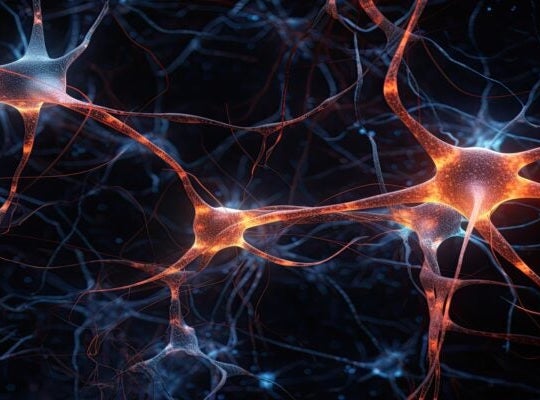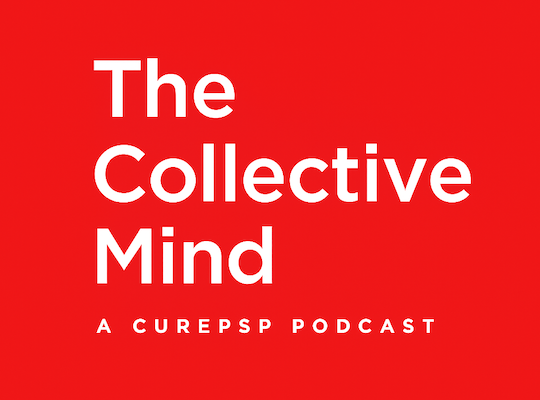Latest Pathway and Pipeline Grants Support Bold Research Through Collaborative Funding
Jul 10, 2025 Oscar Sullivan
CurePSP, in a powerful collaboration with the Rainwater Charitable Foundation (RCF), awarded nearly $400,000 in Pathway and Pipeline Grants to advance critical research on progressive supranuclear palsy (PSP) and corticobasal degeneration (CBD). The grants, bolstered by a $200,000 contribution from RCF, will fund high-impact studies exploring novel biomarkers, therapeutic targets and disease mechanisms in primary tauopathies.
This year’s recipients include four dedicated scientists whose work embraces cutting-edge approaches, such as investigating microglial tau’s role in disease progression to developing new genetic and cellular models of PSP and CBD. Their research reflects CurePSP and RCF’s shared commitment to funding visionary science at its critical early stages — when support is crucial but hardest to secure. This includes a focus on empowering early-career scientists, providing vital resources and mentorship to help them thrive in an increasingly challenging research landscape.
Recipients are poised to leverage this funding through innovative research, accelerating discoveries that could further our understanding of PSP and CBD and enable earlier interventions for those living with PSP and CBD. They emphasized the importance of working directly with families, noting how their insights play an essential role in the research process. Dr. Yuhao (Harry) Min, a Postdoctoral Researcher at Mayo Clinic Jacksonville, is grateful for the support and also for the families who have participated in previous studies. “None of this work would be possible without their participation,” said Dr. Min, noting that his work “will not be done until we bring these treatments to the clinic to achieve meaningful benefits for our patients.”
Pathway and Pipeline Grants provide seed funding to support innovative projects focused on the fundamental neurobiology and mechanisms of tauopathies (Pathway), and translational projects focusing on new therapeutics and biomarkers for tauopathies (Pipeline). The latest funding cycle supports three Pathway grants for foundational tauopathy research and one Pipeline grant for translational therapeutic development. Learn more about the latest funded scientists and their groundbreaking work:
Pathway Grants
Defining the Role of Microglial Tau in 4R Tauopathies
Dr. Abhirami Iyer of Washington University School of Medicine is investigating how microglia (the brain's immune cells) contribute to 4-repeat tauopathies like PSP. Her team discovered that microglia can independently produce tau and undergo harmful changes in these diseases. Using stem cell-derived microglia from patients, the study will: 1) examine how these altered cells affect neurons, 2) determine if tau drives these changes, and 3) test whether boosting TREM2 receptor signaling can repair microglial function. This innovative approach could reveal new treatment targets for clinical trials focused on tau and immune pathways in neurodegeneration.
“My work aims to explore how tau affects microglia, the brain’s resident immune cells, which could help identify early signs of disease and lead to new treatments targeting glial cells, not just neurons, in PSP and CBD,” Dr. Iyer said. “This approach could offer hope for more effective therapies in the future.”
Elucidation of Apoe-Induced Glial Cell Tau Pathology in PSP
Dr. Seiji Kaji of Kyoto University is investigating how apolipoprotein E (ApoE), a protein implicated in Alzheimer's disease, contributes to PSP pathology. His team discovered that ApoE accumulates in protein aggregates in PSP brains and enhances formation of pathological tau in glial cells, a hallmark of PSP. The project will examine how different ApoE genetic variants affect tau aggregation in glial cells, building on their finding that some ApoE forms resist aggregation. This research could reveal new therapeutic strategies targeting ApoE to prevent or slow PSP progression.
“PSP and Alzheimer’s disease may share certain pathomechanisms, potentially explained by the altered function of brain apolipoprotein E (ApoE),” Dr. Kaji said. “This study aims to highlight the potential of anti-ApoE therapy as a treatment strategy for PSP by clarifying the pathological similarities between PSP and Alzheimer’s disease.”
Development of Novel Models to Understand Tau Seeding in PSP and CBD
Dr. Jennifer Rauch of the University of Massachusetts Amherst is developing novel cellular and animal models to investigate how tau aggregation begins in PSP and CBD. Using innovative systems her lab created, the study will screen for cellular conditions and molecular triggers that cause tau to clump in brain cells, employing advanced microscopy and RNA-sequencing. The research aims to identify the critical pathways driving tau pathology in both cell cultures and mouse models, which could reveal new therapeutic targets to prevent or disrupt the initial stages of tau aggregation in these diseases.
“One of the biggest unanswered questions in tauopathy research is: What triggers the initial aggregation of Tau protein in the central nervous system, and why are certain brain cell types more vulnerable than others in different diseases?” Dr. Rauch said. “Our project tackles this fundamental question by developing novel cellular and in vivo models designed to mimic the complex cellular environments of the brain.”
Pipeline Grant
Investigating DDR2 Gene Downregulation as a Novel Therapeutic Target for PSP and Related Tauopathies
Dr. Yuhao (Harry) Min, the postdoctoral researcher from Mayo Clinic Jacksonville mentioned earlier for his patient-centered approach, is investigating DDR2 gene downregulation as a potential treatment for PSP. Now, after demonstrating that reducing DDR2 expression slowed tau pathology in fruit fly models, his team will now test this approach in mammalian models that more closely mimic human PSP. The study will assess both the safety and efficacy of DDR2 manipulation while using RNA sequencing to identify biomarkers and uncover the molecular mechanisms involved. This critical translational research could provide the foundation for developing the first disease-modifying therapy for PSP.
“Demonstrating the safety and effectiveness of downregulating DDR2 in animal models is essential to bringing us closer to development of a therapeutic for trials in our PSP patients,” Dr. Min said. “We will relentlessly pursue DDR2 and other molecules we have identified and continue to uncover for their potential to be therapeutic targets.”
The Pathway and Pipeline Grant program exemplifies CurePSP and RCF's commitment to nurturing the next generation of tauopathy researchers by providing critical seed funding at pivotal career stages. These pilot studies serve as essential stepping stones, generating preliminary data that enables early-career scientists to compete successfully for larger federal grants and establish sustainable research programs focused on PSP, CBD and related tauopathies. By investing in innovative, exploratory research that traditional funding sources often overlook, the program creates a robust pipeline of dedicated investigators who will drive breakthrough discoveries for years to come.
Applications for the fall funding cycle are open, with an October 15 deadline for submissions, offering another opportunity to support bold scientific inquiry that could transform the lives of those affected by these devastating diseases.
Join our email list
Get the latest news and resources
directly to your inbox.
Get the latest news and resources directly to your inbox.
Sign Up


